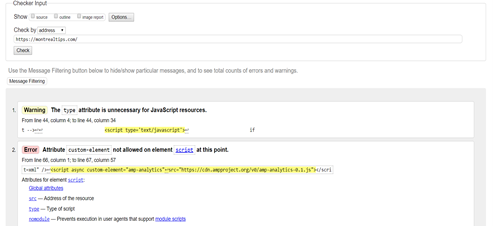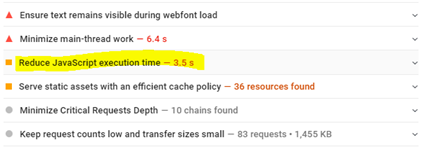5 Lessons I Learned from My Master’s at Smith School of Business
Master’s in Management Innovation and Entrepreneurship Life Lessons
Fourteen months back, I got accepted into Queens’ school of business as part of the 2021 cohort at Smith’s School of Business. The master’s I was accepted in was the Master’s in Management Innovation and Entrepreneurship, aka MMIE.
My intention was simple, I work in a mishmash of corporate and entrepreneurial environments, and I wanted to ensure that I was aligned with the actual best practices.
And at the end of the day, I wanted to bring value to myself and in turn bring value to my clients, my company, and my job.
Here are the 5 lessons I learned from my master’s at Queens
-
If it worked, it doesn’t mean that is the right way.
As a university instructor and marketer with 12 years of experience, with a proven record, I rarely get the ‘I don’t agree with you’, or ‘I don’t think this is going to work’.
Most of the time, I am in control of the situation I am in and rarely enter any room unprepared or without a plan. Partly out of habit and partly that I don’t want to be caught off guard.
I wish that was the case when you are a student. I was in that case in my masters. I got to learn very early on a very important message, if it works for me that doesn’t make it right.
The way I structure my time for example, for the longest time ever, I assumed that I was exceptional at it. Entering MMIE, I realized that I am missing out on a wide array of best practices, and after applying these learnings to my life and business, I was able to have more time for more projects and for myself.
Another example is teamwork, which I will discuss in my second point.
-
Team contracts and team structure are very important.
Early on in my master’s, I met my first team. I must admit I felt I was losing control over my grade and my time. The reason I say this is because I was concerned that my grade would be impacted by other people in the team, and I was also worried that my time would not be respected the way I respect it.
That said, one of the exceptional directors of the program came in with a team contract, and that was the first time I had ever seen one.
If you have never seen one, a team contract specifies early on the terms and conditions under which the teams will work, specifying the roles, responsibilities, timing, process, meetings and much more.
Jaw drop, this exists. After going through the process of setting it up, the team and I were able to go through a smooth semester, working over 3 projects across 3 different courses and getting A’s.
That said, even with a team contract, I was feeling a bit lost, a bit like I was still losing control.
This leads me to my third learning.
-
What I bring to the table is not my skill. It is who I am.
I still felt that I was not fully in control even with the team contract, so I knew that it had nothing to do with other team members, it had to do with me. I knew that I needed to work on myself.
So I went with that question, that fear, that insecurity in my life to my spiritual coach, Eden. I briefed her on what I was going through and she said, ‘I understand’! Here is what I want you to do for our next session.
I want you to come back to me with a list of things that you bring to the team. Directly in the back of my three-dimensional brain, I thought of course, I have a lot of these. LOL.
I came back a week later with a list and it went like this:
- Analytics and data
- Marketing and SEO
- Digital marketing
- Content writing
- Analytical thinking
- Strategy
- Education
- Communication
Eden looked at the list and asked, “yeah, but what do you bring to the table?”.
And me being me, I said, “I just told you.”
She said, “these points belong on your LinkedIn, not in here”.
What you bring to the table as Tarek is beyond the set of skills that you have learned, and she listed a few personal values, soft values along the lines of honesty, respect, reciprocity, fairness, etc.…
Honestly, it was a tough pill to swallow, as most of my life, I associated my self-worth with what I can do, rather than who I am as a human being.
So again, no matter who you are, your true value is who you are underneath and not your job title or your LinkedIn endorsements.
-
Balance & tough choices
Life is full of tough decisions. I am not going to lie, a year with a master’s, consulting, and lecturing at three universities is no walk in the park.
I always believed that I could take on any challenge and still do. But sometimes we must remind ourselves that we are humans, and as important as work and education might be, our health comes first.
As part of the programs, I saw some of my brave classmates quit their full-time jobs and commit fully to the program, and if I can quote some of these excellent people; Shehzad, told me: ‘Tarek, I can’t be in 2 places at the same time, I paid to be here, I chose to be here, and if I fail to give this degree the time it deserves, then I will fail to experience it for what it is.’
That hit home for me. A week later he quit his job and I saw him grow to become one of the most involved students in the program, and eventually graduated with flying colours.
We all are meant to make a decision, a tough one once in a while and from what I learned in this master’s, the best decision you can make is the one that feels right for you, and the one that will bring the best you forward.
-
A failure resume.
At the end of the master’s program, we were asked to write a failure resume. If you don’t know what it is, well it is a resume where you address what you failed to do or what you failed at. It was an exercise to give us perspective on our growth and our wins.
As I didn’t run out of things to write about when it came to my failures, and what I could have improved, I realized that failure is the best thing that could have happened to us. The idea of accepting failure is the best way to actually succeeding.
And while writing all these down, I was surprised to realize that this path of different failures led us to the final project that we had to deliver, which in my case was starting my own online University runiversity.ca.
Our failures list looked something like this:
- Promoting too early
- Choosing the wrong platform
- Not understanding our niche
- Spending too much time on the product rather than on the research
Result: An online university with hundreds of students.
Truth is that failure prepares us. If we give up before our success, then we are not ready anyway. And that is just fine.
I am grateful I got to give up my instructor seat to stand as a student, and I will be doing it again in 2022. I will be going back for another master’s.
I was lucky to have great professors, good coaches, humbling struggles, and brilliant partners.
As I look into whatever the next step life might bring forward, I will use what brought me here and be open to what I will be learning to bring me to where I need to be in the future.
















